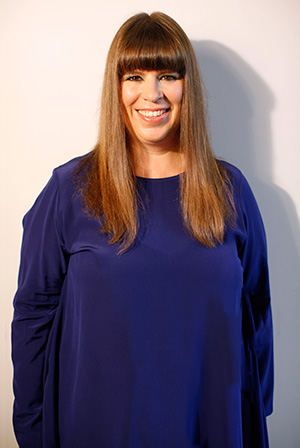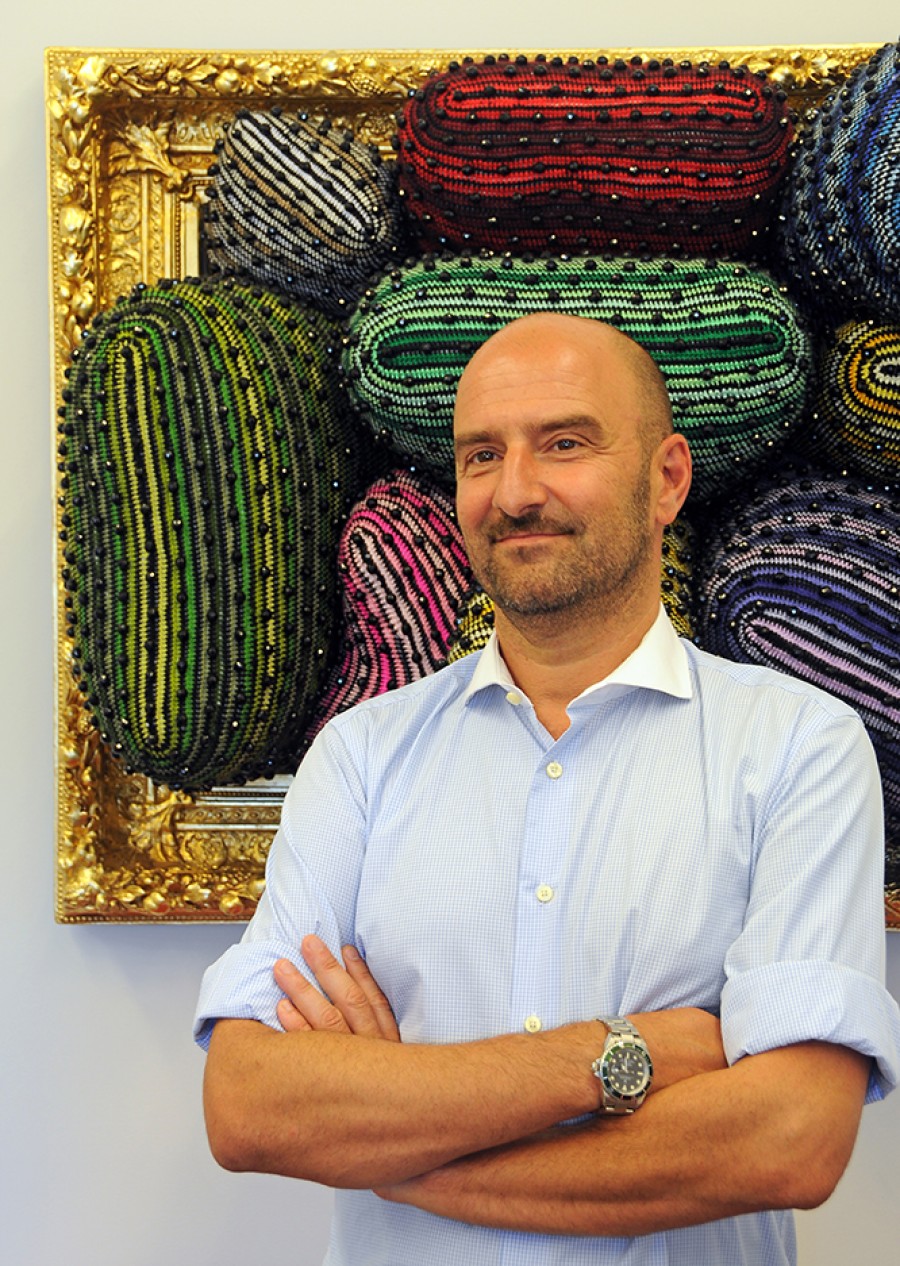
MISSION
Fundação Joana Vasconcelos’s mission is to support those who make Art their path.
AIMS
Fundação Joana Vasconcelos aims to preserve the artist’s work and the promotion and development of arts and cultural education. Therefore, it is creating a collection of Joana Vasconcelos’s works, as well as other artists’, together with the preservation of the artist’s archive. Furthermore, the foundation awards grants and collaborates on other organisations’s projects and initiatives. Simultaneously, the foundation has charitable purposes and supports causes that are relevant to the society.

Joana Vasconcelos was born in 1971. She lives and works in Lisbon. She has exhibited regularly since the mid-1990s. Her work became known internationally after her participation in the 51st Venice Biennale in 2005, with the work A Noiva [The Bride] (2001-05). She was the first woman and the youngest artist to exhibit at the Palace of Versailles, in 2012. Recent highlights of her career include a solo exhibition at Guggenheim Museum Bilbao, the project Trafaria Praia, for the Pavilion of Portugal at the 55th Venice Biennale; the participation in the group exhibition The World Belongs to You at the Palazzo Grassi/François Pinault Foundation, Venice (2011); and her first retrospective, held at the Museu Coleção Berardo, Lisbon (2010).
She has had solo exhibitions and projects at Yorkshire Sculpture Park, West Bretton, United Kingdom (2020); MAAM - MassArt Art Museum, Boston, USA (2020); Kunsthal Rotterdam (2019); Museu de Serralves, Porto (2019); Musée d'Art Moderne et Contemporain, Strasbourg, France (2018); ARoS Aarhus Kunstmuseum, Aarhus, Denmark (2016); 56th International Art Exhibition – la Biennale di Venezia, Italy (2015); Waddesdon Manor - The Rothschild Foundation, Buckinghamshire, United Kingdom (2015); Manchester Art Gallery, United Kingdom (2014); Tel Aviv Museum of Art, Israel (2013); Palácio Nacional da Ajuda, Lisbon, Portugal (2013); CENTQUATRE, Paris, France (2012); Kunsthallen Brandts, Odense, Denmark (2011); Es Baluard, Palma de Mallorca, Spain (2009); Pinacoteca do Estado de São Paulo, Brazil (2008); Palazzo Nani Bernardo Lucheschi, Venice, Italy (2007); The New Art Gallery Walsall, England (2007), CaixaForum, Barcelona, Spain (2006); Passage du Désir/BETC EURO RSCG, Paris, France (2005); Centro Andaluz de Arte Contemporáneo, Seville, Spain (2003), Museu da Eletricidade, Lisbon, Portugal (2001); and the Museu de Arte Contemporânea de Serralves, Porto, Portugal (2000).
She has participated in numerous group exhibitions, including at the Museo di Roma - Palazzo Braschi, Rome, Italy (2016); Museo Nacional Thyssen-Bornemisza, Madrid, Spain (2015); Kulturhuset Stadsteatern, Stockholm, Sweden (2014); FRAC Bourgogne, Dijon, France (2013); ARTIUM, Vitoria-Gasteiz, Spain (2012); the National Museum of Women in the Arts, Washington, DC, USA (2011); Fundação Calouste Gulbenkian, Lisbon, Portugal (2010); Garage Center for Contemporary Culture, Moscow, Russia (2009); FRAC Île-de-France/Le Plateau, Paris, France (2008); MUDAM, Luxembourg City (2007); Istanbul Modern, Turkey (2006); MUSAC, Léon, Spain (2005); Stenersenmuseet, Oslo (2004); MARCO, Vigo, Spain (2003); Műcsarnok, Budapest (2002); and the XXVI Bienal de Arte de Pontevedra, Spain (2000).
Vasconcelos’s work has been featured in many books. Recent highlights include Joana Vasconcelos: Material World (Thames & Hudson, 2015); L'Art Contemporain, by Éloi Rousseau (Larousse, 2015); The Twenty First Century Art Book (Phaidon, 2014); XXL Art: When Artists Think Big (Prestel, 2014); Nature Morte, by Michael Petry (Thames & Hudson, 2013); Sculpture Now, by Anna Moszynska (Thames & Hudson, 2013); Le Dictionnaire Universel des Femmes Créatrices (Des Femmes, 2013); The Naked Nude, by Frances Borzello (Thames & Hudson, 2012); Arte Portuguesa: História Essencial, by Paulo Pereira (Temas e Debates e Círculo de Leitores, 2011); Tactile: High Touch Visuals, by Sven Ehmann, Matthias Huebner e Robert Klanten (Gestalten, 2009); and Regard sur la sculpture contemporaine, de Gérard Xuriguera (FVW, 2008).
Her work has been featured in the magazines Architectural Digest (Madrid, Milan); Art Actuel (Stains, France); Art+Auction (New York); Artforum (New York); Art Press (Paris), Beaux Arts (Issy-les-Moulineaux, France); Contemporary (London); Flash Art (Milan); Tema Celeste (Milan); and The Art Newspaper (London); and also in various newspapers, including El Mundo (Madrid); El País (Madrid); Financial Times (London); International Herald Tribune (Paris); L’Express (Paris); Le Figaro (Paris); Le Monde (Paris); Libération (Paris); The Daily Telegraph (London); The Guardian (London); The Independent (London); and The New York Times (New York).
Her work is represented in various private and public collections, including Amorepacific Museum of Art, Seoul; ARoS Aarhus Kunstmuseum, Aarhus, Denmark; Caixa Geral de Depósitos, Lisbon; Centro de Artes Visuales Fundación Helga de Alvear, Cáceres, Spain; Domaine Pommery, Reims, France; Fondation Louis Vuitton pour la création, Paris; FRAC Bourgogne, Dijon, France; Fundação EDP, Lisbon; Gerard L. Cafesjian Collection, Yerevan, Armenia; MACE – Coleção António Cachola, Elvas, Portugal; MUSAC, Léon, Spain; Museu Coleção Berardo, Lisbon; National Museum of Women in the Arts, Washington, DC; and the Pinault Collection, Paris and Venice.
The nature of Joana Vasconcelos’s creative process is based on the appropriation, decontextualisation and subversion of pre-existent objects and everyday realities. Sculptures and installations, which are revealing of an acute sense of scale and mastery of colour, as well as the recourse to performances and video or photographic records, all combine in the materialization of concepts which challenge the pre-arranged routines of the quotidian. Starting out from ingenious operations of displacement, a reminiscence of the ready-made and the grammars of Nouveau Réalisme and pop, the artist offers us a complicit vision, but one which is at the same time critical of contemporary society and the several features which serve the enunciations of collective identity, especially those that concern the status of women, class distinction or national identity. From this process there derives a speech which is attentive to contemporary idiosyncrasies, where the dichotomies of hand-crafted/industrial, private/public, tradition/modernity and popular culture/erudite culture are imbued with affinities that are apt to renovate the usual fluxes of signification which are characteristic of contemporaneity.
Artist represented by:
Galería Horrach Moyà, Palma de Mallorca
Galerie Scheffel, Bad Homburg
Galerie Valérie Bach/La Patinoire Royale, Brussels
Casa Triângulo, São Paulo
Gowen Contemporary, Geneva
Gallery Gerard Lasés, Bangkok; Hong Kong

.